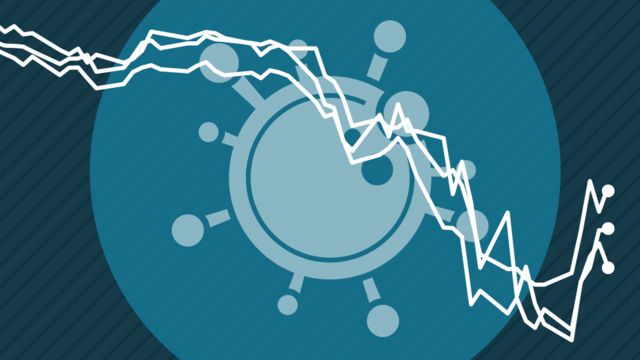By Orlando Gomez
August 22, 2021
The first two ideas that come to mind on the economics of the current pandemic are the challenges faced by the developing markets in each country and the cost of recovery in every business affected by policies and contingency decisions that governments had to make to support public health. These ideas are the foundation of a narrative that tells the story of two challenges worldwide.
While there has been a slightly unpredictable and positive outcome for desk and office workers in advanced economies, this has been a difficult time for those employed or associated in any way with developing economies and emerging markets. It has also been strenuous for those whose jobs depend on public face-to-face interaction, such as frontline workers, teachers, hospitality, food, retail, and healthcare employees, only to mention some, because not everyone has the luxury of working from home.
As well presented by the World Bank in June 2021, the global growth expectation for 2021 is 5.6% (Kose, 2021). However, it is crucial to consider a breakdown of what this figure means for the global economy. It is a high number, probably the best one, compared with rebounds over past recessions. While it is a definite peak for advanced economies, it comes with the cost of uneven recoveries. Ultimately, developing and emerging markets, which are still struggling, would pay the highest price for the global economic recovery. Developing economies must ensure enough vaccines for their population and concentrate their efforts on supporting their community, currently suffering from job losses, lack of access to housing and food, and income outages.

The magnitude of this economic recovery unevenness is quite evident in cases like the USA, expected to recover and grow close to 7% by the end of 2021 (the fastest economic rebound since the mid-80s), based on the same source cited above. The USA undertook vaccine programs faster and implemented vastly social support measures. Low-income countries will grow only around 3%. A clear lesson of this pandemic is that countries that implement vaccination programs faster recover at a higher rate. As counter-intuitive as lockdowns seem to be to some people, numbers show that it is rational and makes more sense to tackle virus epidemics from its root by preventing community spread.
One of the consequences of fast, unplanned economic growth is high inflation, already expected for the end of the year 2021 in both advanced economies and emerging markets. This inflation could be only a temporary problem. Given the impact on markets, employment, and housing, this inflation, in particular, could mainly influence the primary sector of the economy, creating food insecurity, given that most inflations concentrate on primary foods and agriculture.
Inflationary repression and high debt would depend mainly on how efficiently the countries handle the current pandemic. Healthcare management and public health measurements must be a priority, along with social support services.
Healthcare institutions, particularly in Canada and the United States, have had significant financial hardships in the recent decades. Difficulties, such as keeping up with infrastructure upgrades, the exponentially high cost of technology, and operating margins that have declined over the years as the requirements of participation in community programs promoted by governments increase. Paradoxically, these same difficulties seem to harm any return in the form of subsidies, on which these hospitals could ever count. Private clinics, surgery complexes, and outpatient diagnostic centers started profiting from the best market share since the wealthy would pay a markup for a first-class health service. Public hospitals began to fall off the competition and became academic research centers in collaboration with universities. Data from The Urban Institute – The Kaiser Commission on Medicare and the Uninsured shows, in their 2005 executive report, that the amount of uninsured Americans grew by 11.2% between 2001 and 2004. During the same period, the central government spending on uninsured individuals reduced by 8.9% (Hadley et al., 2005). Further data from 2020 from the Commonwealth Fund Biennial Health Insurance Survey (Collins et al., 2021) show figures from the first half of 2020 when 43.4 percent of American adults ages 19 to 64 were not adequately insured. This statistic has not changed since the same survey took place in 2018 and includes results obtained after the declaration of the COVID-19 pandemic.
These challenges turned the attention of public-funded healthcare institutions into philanthropy as their most productive and perhaps only potential of capitalization.
Philanthropy has become a dependable source of funding for non-profits. Hospital CEOs are now concentrating more efforts on fundraising than ever before, on a growing trend, bringing along many changes in the dynamic of making capital. New and attractive donation opportunities caused CEOs to engage in fundraising events, to the point that a new scope required hospitals to adhere to newly formed foundations with the appropriate drive to raise only capital and bid on major gifts developed by corporate and the wealthy (Haderlein, 2006).
In detail, identified and forged by Campbell & Company (2021), these are five noticeable new trends in philanthropy in the United States:
1- Non-for-profit organizations are facing challenges never experienced before.
2- The COVID-19 pandemic forced the United States into recession, which will have an expected impact on charitable giving.
3- Social issues, such as racial justice and police brutality in the USA and Canada, have turned the attention of donors and volunteers into social causes and protests.
4- Community-focused fundraising has challenged the status quo of fundraising over any other traditionally common cause.
In the beginning, fundraising events occurred as panhandling events with no projected expectations or capital goals based on educated calculations. It took some time for structured foundations to learn to raise capital from philanthropy. Non-profits started engaging donors into several resources, such as periodic contributions, and more effectively to present complex budgets that included the necessities that new funding would cover. Thus, the pledge incorporated value.
An easy conclusion of the transformation of fundraising over the years is that empathy promotes engagement. Hence, non-profit organizations will start focusing fundraising efforts on specific targets, both in terms of goals and initiatives. In addition, the complexity of large-scale social issues, such as the current pandemic, affects so many areas of the economy that governments need to break down their efforts into a set of fast resolutions to give the public health component priority. On the current pandemic, by physically preventing the spread of the virus and promoting a solid vaccination plan. A pandemic affects all areas of the economy. There is not much to be done to prevent or avoid that. However, governments that can afford to act rapidly would increase the chances of prompt a full recovery.
Financial preparedness for economic recessions requires experience and professional advice. Our clients at Estrategia Financiera y Tributaria rest assured that we will always provide the best support on their financial decisions. Our partners and team members are continuously upgrading their knowledge. Our education and experience make us your best ally. Not only to support your financial commitments and help you manage your assets reasonably but to be there for you if you ever need help making the best decisions while facing financial adversities.
References
Collins, S.R., Gunja, M. Z., Aboulafia, G.N. (2021) ‘U.S. Health Insurance Coverage in 2020: A Looming Crisis in Affordability – Findings from the Commonwealth Fund Biennial Health Insurance Survey, 2020’ The Commonwealth Fund. [online] Available at https://www.commonwealthfund.org/publications/issue-briefs/2020/aug/looming-crisis-health-coverage-2020-biennial#:~:text=In%20the%20first%20half%20of%202020%2C%2043.4%20percent%20of%20U.S.,uninsured%20rate%20was%2012.5%20percent. Accessed on March 29, 2021.
Hadley, J., Cravens, M., Coughlin, T., Holahan, J. (2005) ‘Federal Spending on the Health Care Safety Net from 2001 – 2004: Has Spending Kept Pace with the Growth in the Uninsured?’ Executive Summary 2005 – Kaiser Commission on Medicaid and the Uninsured – The Urban Institute. [online] Available at https://www.kff.org/wp-content/uploads/2013/01/federal-spending-on-the-health-care-safety-net-from-2001-2004-has-spending-kept-pace-with-the-growth-of-the-uninsured-report-executive-summary.pdf Accessed on November 27, 2019.
Haderlein, J. (2006) ‘Unleashing the untapped potential of hospital philanthropy’ Health Affairs (Project Hope), 25(2), pp. 541–545. Available at https://search-ebscohost-com.liverpool.idm.oclc.org/login.aspx?direct=true&db=mnh&AN=16522608&site=eds-live&scope=site (Accessed: November 27, 2019)

